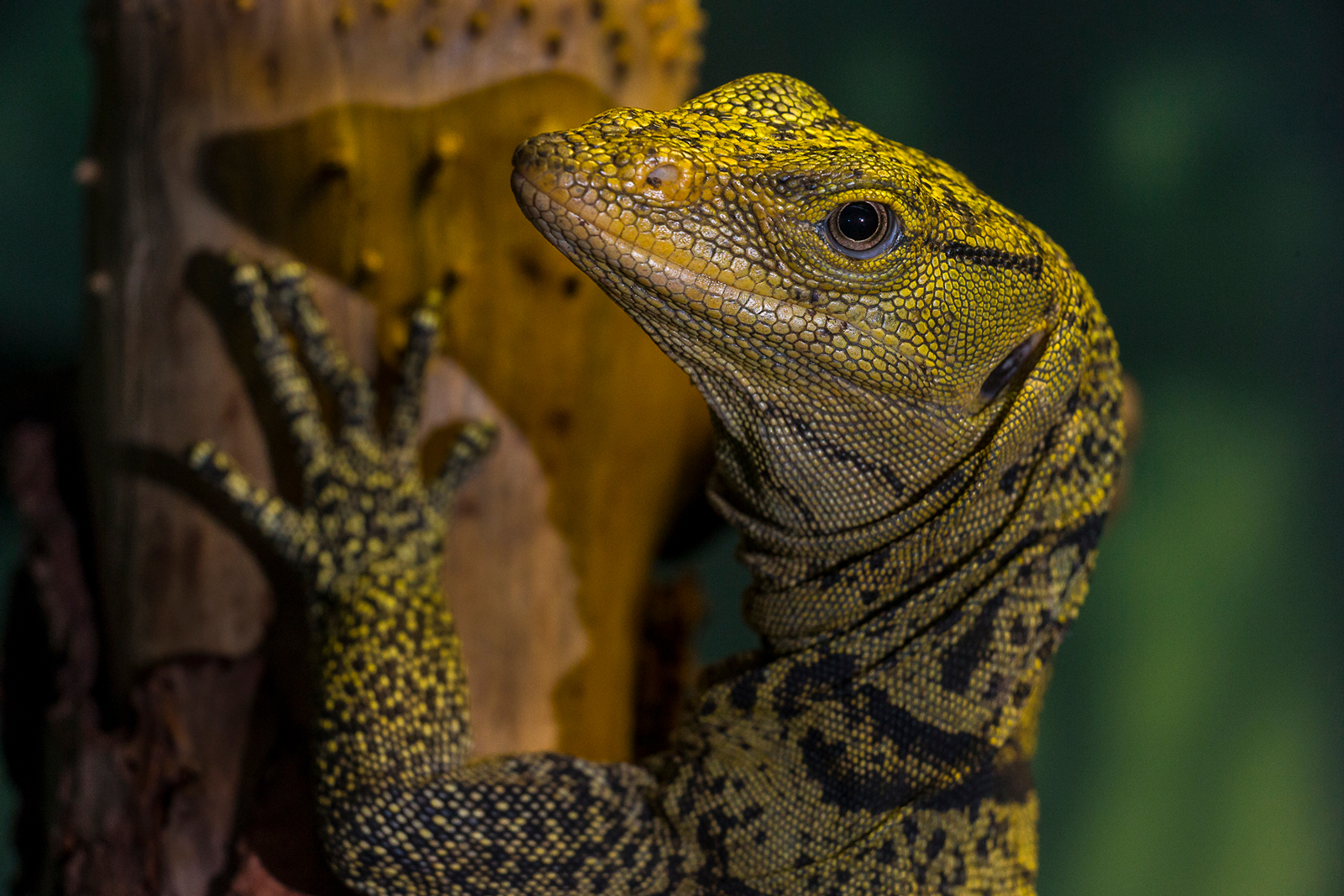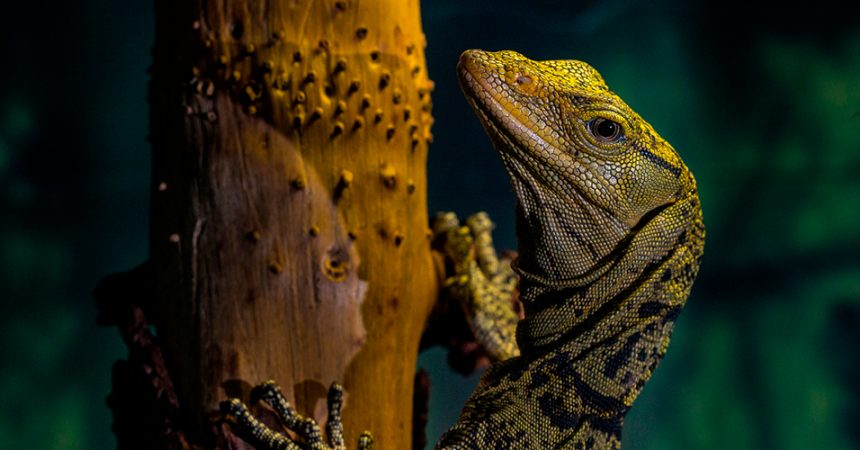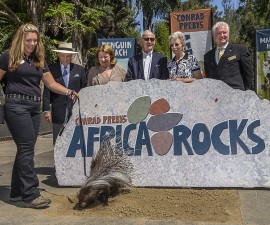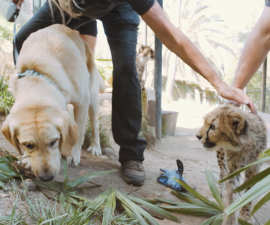An extremely rare monitor lizard is now making its home at the San Diego Zoo. The lizard, a year-old Gray’s monitor, hatched at the Los Angeles Zoo through a conservation breeding program before arriving in San Diego earlier this year. The monitor’s parents were from a group of lizards confiscated by the U.S. Fish and Wildlife Service from the illegal pet trade. Only a handful of accredited zoos in the United States currently house this species, and the San Diego Zoo is only one of two institutions that received an offspring from the Los Angeles Zoo’s breeding program.
Gray’s monitors are extremely shy reptiles, only found on a few islands in the Philippines. The species is well known for its diet that consists primarily of fruit, which is in contrast to the majority of monitor lizards that primarily eat meat. Animal care staff says having this species in managed care is important for raising awareness of the species and its unique behaviors.
“Monitor lizards, if you look really closely, actually look like dinosaurs,” said Laurie Arends, keeper at the San Diego Zoo. “They have that focus and attention. So, monitor lizards will pay attention all the time and they use that instinct to get through life.”

The Gray’s monitor is categorized as vulnerable on the International Union for Conservation of Nature (IUCN) Red List of Threatened Species. Due to their elusive nature, conservationists are not sure of precise population numbers; however, in the last decade, conservationists have seen the Gray’s monitor population drop by more than an estimated 30 percent, due to severe habitat loss and fragmentation; and also from hunting and collection for the illegal pet trade. Conservationists say the best way to help this species survive is to maintain a healthy assurance population in managed care, while at the same time conserving the animal’s existing wild habitat.
This rare Gray’s monitor is expected to grow to an estimated five feet in length as an adult. San Diego Zoo guests can visit him in the Zoo’s Klauber-Shaw Reptile House.





